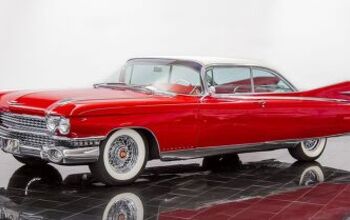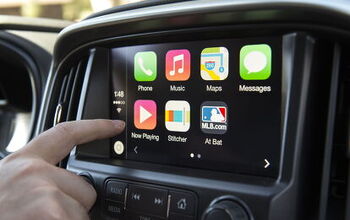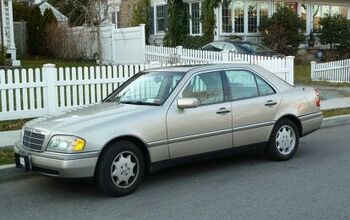Warning: This Piece Contains Accounting Ratios. Reader Discretion is Advised.

As Gregg Easterbrook once famously proclaimed, torture numbers and they’ll confess to anything. As an accountant, I’ve always considered numbers to be a lot more malleable than most math-challenged people believe; they’ll confess the truth long before an interrogator gets out the metaphorical water board. For example, a simple analysis on a small subset of GM and Toyota’s voluminous public data can yield important insights into their relative corporate personalities. By looking at both company’s 2006 U.S. Sales and Inventory figures, the numbers sing like a canary.
Obviously, GM and Toyota’s sales and inventory stats are not 100 percent comparable. For one thing, The General is [still] largely a truck-based manufacturer. Despite a desperate shift toward CUV’s and increased investment in its passenger car brands, trucks account for 57 percent of the automaker’s 2006 unit sales. Toyota’s is far more of a car-maker. Despite upping Tundra sales to around 180k per year, 42 percent of the Japanese manufacturer’s 2006 unit sales were trucks.
In the 12 calendar months comprising 2006, General Motors sold 4.065 million vehicles in the North American market. In the same time frame, Toyota sold 2.543 million units. To achieve these sales, General Motors carried an average inventory of 1.064 million vehicles throughout the year.
If you prorate GM’s Sales-to-Inventory relationship to Toyota’s, you would be forgiven for assuming Toyota would average about 600k vehicles in inventory at any given time during 2006. In actual fact, Toyota’s average 2006 inventory was just 216,536 vehicles.
Put differently, Toyota sold about 218k cars per month last year to Americans. At any given time, ToMoCo’s average inventory never contained more than 30 days worth of product. Ceteris paribus, had Toyota stopped producing cars on June 1, 2006, it would have run out of cars before July Fourth fireworks hit the sky over Bozeman, Montana.
During the same period, The General sold 335k mainstream cars and 3k Corvettes per month. The American automaker’s average inventory stood in excess of one million and never below 919k (in July 2006). So The General kept about three months and four days worth of unsold cars on hand-– many of which were still on dealer lots (remember, once a car ships to a dealer, GM recognizes a sale). Ceteris paribus, had GM stopped producing cars on June 1, 2006, its inventory would have lasted until Labor Day.
Why did Toyota need only 20 percent of GM’s inventory to sell 60 percent as many vehicles? Theories abound. Here’s mine…
In 2006, General Motors sold 78 models over eight brands. Toyota sold 27 models over three brands. Consumers seeking a family-friendly, Toyota-made car could opt for a Camry, Prius or, if well-to-do, an Avalon. In 2006, the General offered up about fifteen Camry alternatives. Pontiac, the would-be sport brand, accounted for three Camry-class cars alone: Grand Am, Grand Prix, G6.
Enter the new Chevrolet Malibu. How many do new ‘Bu’s do you keep in stock when a loyal GM customer could easily pick another car in the same segment, at the same dealer, or cross the street to a Saturn dealer and pick a badge-engineered clone of the “original?” Sure, the new car might generate conquest sales (and we could include non-fleet GM buyers in that metric), but how in the world do you guesstimate that number?
Meanwhile, satisfied (or dissatisfied) Camry buyers can choose… another Camry. Toyota can predict potential sales with astounding accuracy simply because their tightly focused brand portfolio eliminates a large number of variables. They can also draw upon statistical analysis of retail Camry buyers’ habits stretching back to 1983.
All of which brings us to the meat of the matter. Brand focus leads to increased consumer loyalty, which leads to better forecasts, which leads to better inventory management, which leads to lower inventory. While General Motors has long championed the “whatever sticks to the wall” approach, Toyota has been content to do a few things well.
Numbers are just symptoms of the corporate culture that produces them. Years into a “turnaround”, GM refuses to give a deadline on its return to long-term, stable profitability. In that light, it should come as no surprise that the same company can not proclaim, with any credibility, how many bread-and-butter sedans from its bread-and-butter brand it will sell. Funny thing about numbers: even in their absence, they can be significant.

Latest Car Reviews
Read moreLatest Product Reviews
Read moreRecent Comments
- SPPPP Vibrant color 9 times out of 10 for me. There may be a few shapes that look just right in metallic gray, for example. There are a few nices ones out there. And I like VW "White Silver". But I'd usually prefer a deep red or a vibrant metallic green. Or a bright blue.
- 28-Cars-Later Say it ain't so, so reboot #6* isn't going to change anything?[list=1][*]V4-6-8 and High "Tech" 4100.[/*][*]Front wheel drive sooooo modern.[/*][*]NOrthSTARt.[/*][*]Catera wooooo.[/*][*]ATS all the things.[/*][*]We're *are* your daddy's Tesla. [/*][/list=1]
- MaintenanceCosts Can I have the hybrid powertrains and packaging of the RAV4 Hybrid or Prime with the interior materials, design, and build quality of the Mazda?
- ToolGuy I have 2 podcasts to listen to before commenting, stop rushing my homework.
- ToolGuy Please allow me to listen to the podcast before commenting. (This is the way my mind works, please forgive me.)


































Comments
Join the conversation
Hey Samir, Why does Gregg Easterbrook hate the Patriots so much?
jmack91z28
As I read this editorial, if it's bashing anything, it's bashing a business model that allows the average on-hand inventory to equal approximately 90 days' sales, when a top competitor has a business model that keeps average on-hand inventory to about 30 days' sales. (Of course, it would be interesting to know whether Toyotas on U.S.-bound ships counted as on-hand inventory. This would have to be balanced against how GM reported the 119k imports included in its annual sales report.) At any rate, if you can refute any of the points Samir made, I'm sure he'd be grateful to read your refutation (witness his response to the issue of how GM and Toyota sales are reported). In the absence of refutation, I must conclude that your appeal to emotion is part of the problem that is keeping American auto manufacturers from solving their problems.